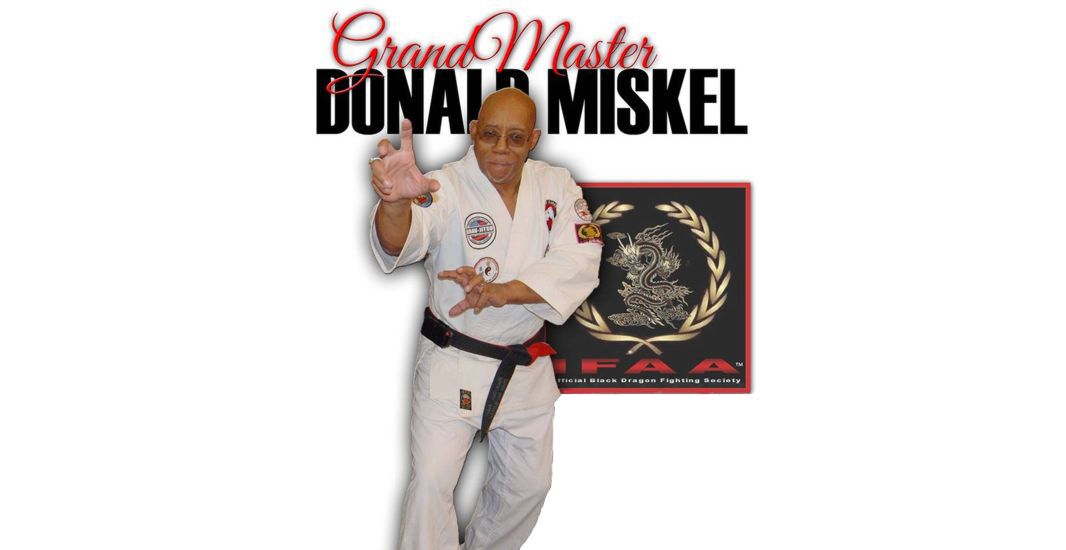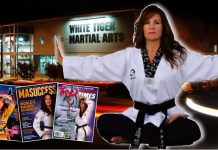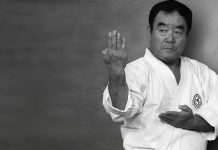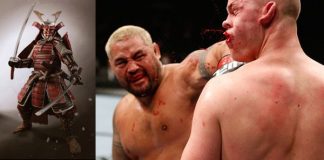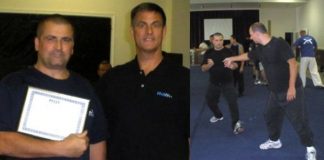Grandmaster Donald Miskel discusses the reality of combat in the martial arts and the ability to use what we learn in real situations.
I am a lifelong martial artist. I’ve been involved in the martial arts since I was a young kid. I’m a minister and pastor so I would hesitate to say that ‘karate is my life’ but it has been a very important part of my life.
I have always been realistic in my approach to the martial arts. Growing up in one of the toughest neighborhood in Chicago does that to a martial artist. I trained under some of the best but some of the most prominent instructors in my early martial art career would be considered controversial. Some were renegades and what was called dojo bangers. We were into real world martial arts when it wasn’t popular and was frowned on.
I was a member of the old ‘World Karate Federation’ in the mid sixties and was an original member of the ‘Black Dragon Fighting Society’. I studied with the most prominent judo/jiu jitsu instructors and the first JKA Shotokan instructor in the Midwest during my early career but the most influential instructors of my formative years were G.M. Doug Dwyer and the late G.M. John Keehan (aka Count Dante). Their approach to combat and self defense was brutal, immediate and no-nonsense.
I align myself with several controversial martial art grand masters. Their controversy has nothing to do with their skill or ability but because of how they came about their skill and the claims that they make about past accomplishments. Perhaps my opinion of these individuals is because I look at the martial arts from a different perspective than many. I don’t so much concern myself with the claims of these individuals as I do with their knowledge, skill and teaching abilities.
The martial arts were never meant to be a sport. To make a sport of them robs them of much of their more combative aspects and their effectiveness in self defense. Each art developed because of the needs of the times and what they were designed to address. Karate gave an unarmed peasant a fighting chance against a sword wielding samurai. Let me be clear with this. An armed man always has the advantage. Were this otherwise our military would be trained primarily in karate and judo. We all admit that such an approach would be ridiculous and probably fatal. Still, even in the military unarmed combat has its place.
The martial art system that I practice and teach came about because of the needs and the challenges that I’ve been presented with and the nature of the students that I taught. It was also influenced by the communities in which it developed. The martial arts got no particular respect in the inner city of Chicago and its mean streets. Physical prowess did. There was no room for theory. If you taught in the hood you had to be proficient in your art. The criminal elements that victimized the neighborhoods of the city were as quick to extort money from a local dojo as from any other business. If you claimed to be tough you’d better be able to back it up.
Many of my students were police officers or worked in other high risk professions. They swore by what I taught. They weren’t interested in tournament fighting or kata competition. They needed something that enhanced their abilities and increased their chances of surviving the challenges that they met from day to day.
I have worked in hospital security, personal protection, mental health and on the fringes of law enforcement for much of my life. That plus the fact that I’m a combat veteran and that I grew up in the back allies and side streets of one of the toughest cities in the nation forged a realistic approach to combat.
In the martial arts there are a lot of sensei and instructors that have never been in a fight in their life criticizing individuals who had to fight everyday of their lives to survive. How many of them have actually faced a knife wielding opponent or stared down the barrel of a handgun? How many have been shot, stabbed, cut or clubbed? How many have had to deal with a psychotic individual? Please understand me; I’m not saying that such a scenario is the preferable way of learning the martial arts but unless you’ve been in such a situation you have a limited understanding of the martial arts for combat. Therefore if you criticize those who have been in those situations and continue to do so from day to day you have no knowledge of the subject you’re trying to address.
I’ve worked as a bouncer or as a Psych tech in situations where I wasn’t allowed to actually injure the people that I dealt with. In such instances I had to develop ways of dealing with these situations that offered the least harm to an intoxicated patron or an impaired patient and yet gave me success in my profession with the least dander of harm or injury. All of these experiences shaped the art that I teach.
Combat is unforgiving. Because of that we have to be careful about what we teach our students. Too often students have no idea about the realities of combat. Unfortunately in many cases neither do their instructors. Hopefully they will never have to prove their training in a life or death situation. Using the dubious skills they may have been taught could prove dangerous and even fatal.
Count Dante was criticized because of the brutal system that he taught. Much of his system was as much street fighting as martial art. Its viciousness reflected the world of the city streets. He was also ostracized because of mixing techniques from many martial arts as well as from the reality of the streets. That just wasn’t done in those days. He hosted full contact tournaments that pitted combatants from various styles and systems. All of which was frowned on then but is common place now. With all of his controversy he was a visionary. Too far ahead of his time to be appreciated. He was a brutal realist when it came to combat.
What is most widely accepted isn’t always what’s most viable. Just because the mainstream embraces it that gives it no more validity. A system is only as effective as how well it does what it is designed to do. I love the sport aspects of the martial arts. I even teach kata and some kumite. I’m no tournament champion and my kata is less than world class. Put me up against a Bill Wallace or Chuck Norris in a tournament situation and I’d get my clock cleaned. As close as I’ve come to something like that is in the illegal underground fight circuits. One doesn’t translate to the other and the skill level wasn’t the same. I make no claims to being a kumite champion but I was hell on wheels in the streets. It’s why I studied martial arts in the first place. That, my brother, is where the rubber meets the road. It’s a road less traveled and I certainly don’t recommend it to everyone but it is realistic.
God bless you my brethren and fellow martial artists. Study hard and go with God.
Rev. Dr. Donald Miskel ThD, PhD, MDiv.

